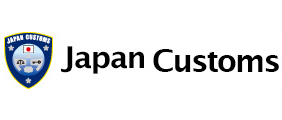4014 Elimination of Tariffs on Imported Goods under the Japan Thailand Economic Partnership Agreement
Japan is to either eliminate or reduce tariffs (concessions) in line with the schedule described in Annex I of the EPA, for goods of the other signatory nation that satisfies the rules of origin stipulated in the Japan-Thailand economic partnership agreement. Immediate tariff elimination, gradual tariff elimination and reduction, and the categories for concession in tariff quota, etc. for Japan are prescribed in the "General Notes" of Part 1 of Annex I (Reference 1). Also, the detailed schedule for Japan on repeat consultations and tariff quota is prescribed in "Notes for Schedule of Japan" in Part 2, Appendix I (Reference 2).
(Reference 1: General Notes)
Fourth column | Description | Notes |
|---|---|---|
A | Tariff elimination on the date of EPA enforcement | Items for immediate tariff elimination (examples: Mangoes, Mangosteens, Prawn and processed prawn products , etc.) |
Bn | Uniform tariff reduction on a yearly basis in “n+1” phases from the base rate | Items for tariff reduction & elimination in phases n=3,5,7,10,15 (Examples: Tunas, in airtight containers, etc.) First reduction: The date of EPA enforcement Subsequent reduction: April 1 of each year |
P | Tariff reduction on the date of EPA enforcement
| Items for tariff reduction in phases (Example: Chicken & processed chicken products, etc.) First reduction: The date of EPA enforcement Subsequent reduction: April 1 of each year |
Q | Establishment of tariff quota
| Items with tariff quota (Examples: Bananas, pineapple (less than 900 g), sorghum & starch derivatives, etc.) |
R | Negotiate on tariff commitment after a period of time following EPA enforcement | Items for renegotiation (Examples: Sugar, laminated boards, etc.) |
X | Excluded from any commitment | Exemption items (Examples: Wheat, processed wheat products, marine IQ products, etc.) |
(Reference 2: Notes for Schedule of Japan)
Table 5 column | Description |
|---|---|
1 | Date of renegotiation (fifth year after EPA enforcement): Pork, etc. |
2 | Fresh bananas: Tariff quota requirements (quota: 4,000 tons in first year → 8,000 tons in fifth year; quota tax rate: Duty-free) |
3 | Fresh pineapple (less than 900 g): Tariff quota requirements (quota: 100 tons in first year → 300 tons in fifth year; quota tax rate: Duty-free) |
4 | Date of renegotiation (fifth year from the enforcement of EPA or date agreed by the signatory parties, whichever comes earlier): Cane sugar, etc. |
5 | Processed pork products: Tariff quota requirements (quota: 1,200 tons; quota tax rate: 16%) |
6 | Sorghum: Tariff quota requirements (quota: 4,000 tons in third year → 5,000 tons in fourth and subsequent years; quota tax rate: ¥7.65 per kilogram) |
7 | Esterified starch and other starch derivatives: Tariff quota requirements (quota: 200,000 tons; quota tax rate: Duty-free) |
Provisions regarding tariff concessions between Japan and Thailand
・Japan Schedule (Part 1 & 2, Annex I) (Japanese)
http://www.mofa.go.jp/mofaj/gaiko/fta/j_asean/thailand/pdfs/fuzoku01.pdf
・Japan and Thailand Schedules (Part 1, 2 & 3, Annex I) (English)
http://www.mofa.go.jp/region/asia-paci/thailand/epa0704/annex1.pdf
For consultations on customs procedures, please contact the nearest Customs Counselor.
Please see No. 9301 for inquiries.

